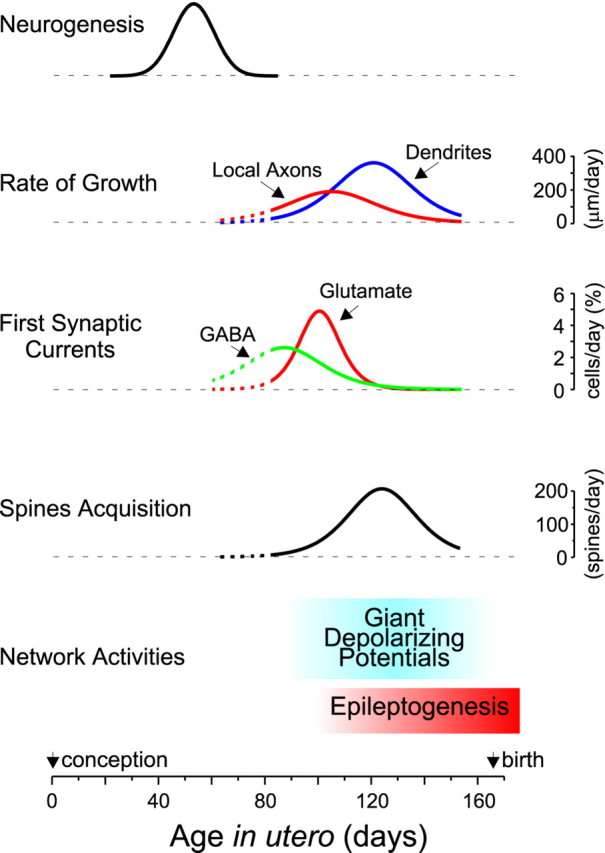Fig. 9.

Developmental template of the fetal macaque hippocampus. Hippocampal neurons are generated during the first half of gestation, with a peak at E55. During the second half of gestation, pyramidal cells grow intensively with the maximal rate of axonal and dendritic growth attained at ∼E105 and E120 (200 and 400 μm/d), respectively. Already at midgestation (E85), half of the pyramidal cells receive GABAergic synaptic inputs. Glutamatergic synaptic currents appear later, and their expression coincides with the appearance of the first dendritic spines. The acquisition of glutamatergic synapses (as deduced from the number of dendritic spines) proceeds with a maximal rate of ∼200 synapses formed every day on a pyramidal cell at ∼E125. During the phase of intensive neuronal growth and synaptogenesis most of the neuronal activity is synchronized in a particular pattern of spontaneous network activity—the GDPs. By the last third of gestation, the hippocampal network also becomes capable of generating epileptiform activities. Data for the neurogenesis were taken from Rakic and Nowakowski (1981) and fitted with a Gaussian function. Rates of the axonal and dendritic growth, spine acquisition, and functional synapses formation were estimated by taking the first derivative of the Boltzmann fits in Figures 2 and3C.
